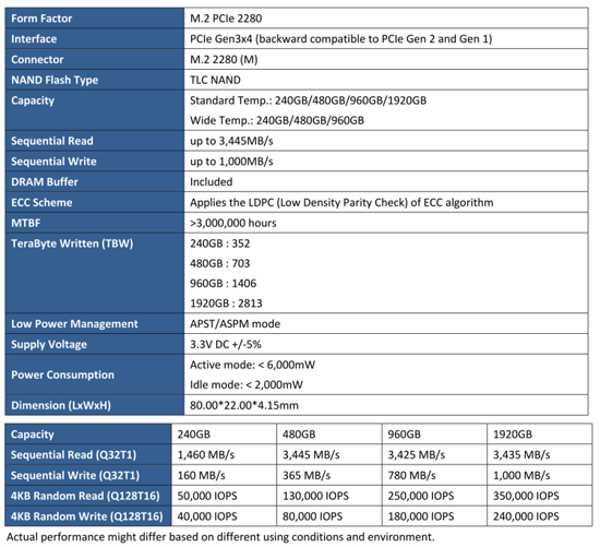Cervoz Technology T436 Industrial PCIe NVMe Gen3x4 M.2 2280 Up to 1,920GB SSD with Power Loss Protection
Operating from -40°C to 85°C
This is a Press Release edited by StorageNewsletter.com on September 4, 2023 at 2:02 pmCervoz Technology Co., Ltd. introduces the T436 family industrial PCIe NVMe Gen3x4 M.2 2280 SSDs.

Compatible with the PCIe Gen3x4 interface, NVMe protocol, and M.2 2280 form factor, the series is a for both booting and storage in PCs and motherboards. What sets the T436 SSDs apart is firm’s proprietary Power Loss Protection technology.
The company pushes the boundaries of SSD performance and reliability with the introduction of the T436 NVMe PCIe Gen3x4 SSDs, epitomizing high-speed operations combined with Power Loss Protection technology.
In an era dominated by rapid IoT and AI advancements, our dependency on data is paramount. With global energy fluctuations driven by soaring computing needs, there’s more than just a call for swifter data management. It’s crucial to protect our data from potential power inconsistencies.
Guarding data vs. power instability
The standout feature of the T436 is its PLP (Power Loss Protection) technology. Power disruptions have long been a challenge for SSDs, making valuable data vulnerable to corruption or loss, threatening both data integrity and operational continuity. The T436 SSDs integrate the Powerguard technology to combat these challenges. Upon an unexpected power dip, Powerguard activates instantly, drawing additional power from tantalum capacitors, ensuring that any data within the DRAM buffer is written back to the NAND flash. Typically, average SSDs require around 40ms of backup power discharge to complete the data write-in task, influenced by the data’s complexity or size. With the firm‘s Powerguard, the buffer time from a power dip to potential failure extends to 88ms, ensuring that all data has ample time to be written fully.
All of the above is just a part of the company’s PLP technology. When combined with Safeguard’s VDT (Voltage Detector) mechanism, Voltguard’s voltage stabilization, and Circuitguard’s defense vs. abnormal currents, the firm’s PLP offers protection vs. data loss due to power disturbances, ensuring the integrity and security of your data.
Speed and reliability
The T436 family of SSDs is not just about speed; it’s also about reliability. With features that range from compliance with NVMe 1.3/PCI Express Base 3.1 standards to the incorporation of SSD-grade-quality TLC flash memory from Kioxia, the T436 is designed for efficiency. Moreover, the company’s firmware features an ECC algorithm – Low-Density Parity Check (LDPC) decoding – together with the End-to-End Data Protection method, ensuring data reliability and integrity.
Recognizing the heat generated by high performance, the T436 is available in a wide-temperature version that can reliably operate from -40°C to 85°C. Additionally, the integrated SW-HW overheating protection mechanism, complemented by an optimized heatsink, ensures effective heat dissipation, guaranteeing performance at all times.
Why T436 SSDs?
With capacities ranging from 240 to 1,920GB, an operating temperature range of -40°C to 85°C, dynamic thermal throttling, DRAM Buffer, AES 256-bit encryption, and more, the T436 family offers a solution tailored for businesses seeking both performance and unwavering reliability. Whether the need is for rapid data access or consistent operations in power-critical situations, it ensures that businesses stay at the forefront of efficiency and reliability.

















 Subscribe to our free daily newsletter
Subscribe to our free daily newsletter


